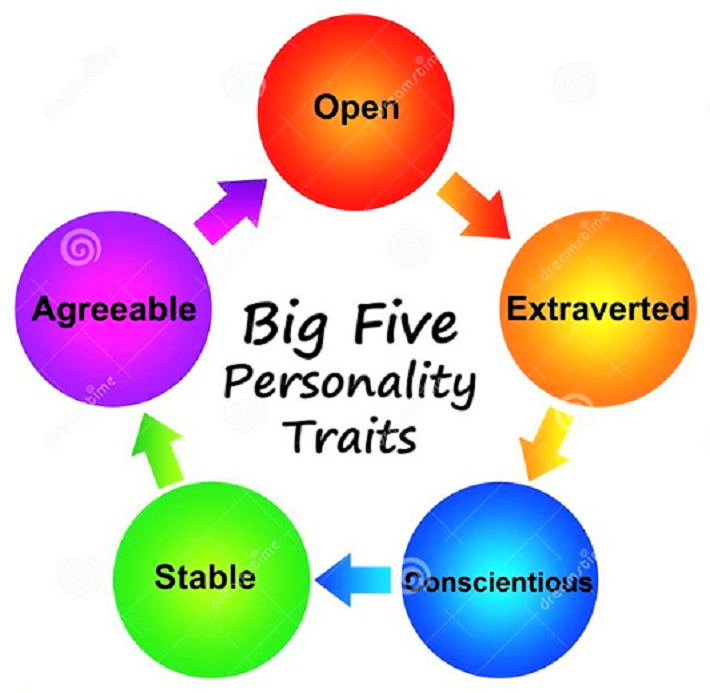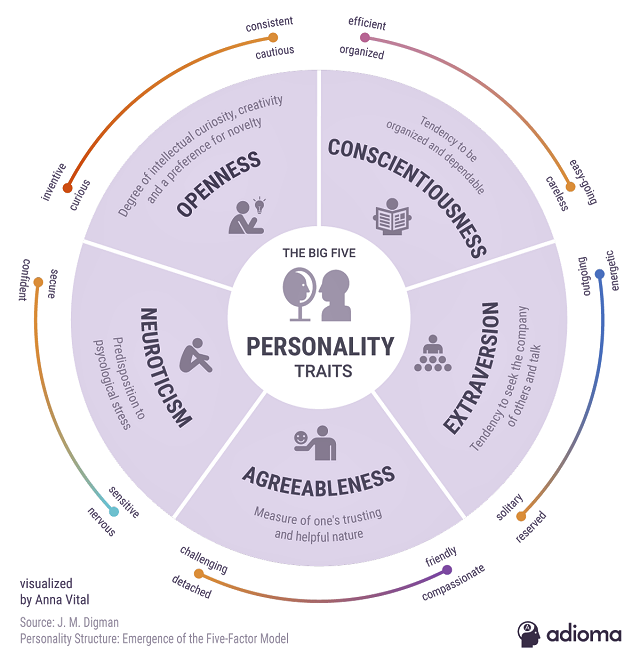
neurosciencenew
How to see yourself as others see you?
How can you scientifically measure your personality? At infographic below here are the big five personality traits:

Today many psychologists believe The Big Five personality traits, acronym OCEAN, or “the five-factor model” or FFM, sufficiently describe the reality of humanity: neuroticism, extraversion, openness to experience, agreeableness, and conscientiousness.
The five personality traits are:
Openness to experience
A degree of intellectual curiosity, creativity, and a preference for novelty.
The openness you can measure on a continuum from curious to cautious. Being curious also results in being inventive. Being cautious in turn leads to being consistent. People who are open tend to show their emotions, appreciation for art, and unconventional ideas. This tendency leads to having strong personal preferences for a variety of activities over a disciplined routine. In the extreme, though, openness leads to unpredictability and high-risk behaviors.
Conscientiousness
Are You organized and dependable?
Conscientiousness can measure on a continuum from organized to careless. Being organized in turn results in a person who is efficient. Being careless gives the benefit (or the disadvantage, depending on your point of view) of being easygoing. Highly conscientious people prefer making plans for spontaneous behavior. In the extreme, conscientiousness looks like stubbornness. Low conscientiousness looks like flexibility and spontaneity at best and sloppiness at worst.
Extraversion
A tendency to seek the company of others and talk.
Extraversion is measured on a continuum from energetic to reserved. Being energetic allows a person to be outgoing. Being reserved leads to a solitary type of personality. Extraverted people feel most energetic when they are in the company of others. They re-charge by interacting and talking. In the extreme, extraversion is seen as attention-seeking. Low extraversion results in a reflective personality. Too much of this behavior makes one look self-absorbed. Generally, extraverts appear more dominant in social settings as introverts.
Agreeableness
A measure of one’s trusting and helpful nature.
Agreeableness is measured on a continuum from compassionate to challenging. We see compassionate people as friends. They seem to cooperate with us.
Detached people appear to challenge us. On the opposite extreme, low agreeableness looks like competitiveness which can be seen as “being difficult” or untrustworthy.
Neuroticism
Predisposition to psychological stress.
Neuroticism is on a spectrum from nervous to confident. Nervousness in turn allows for sensitivity; while confidence allows one to feel secure. Sensitive people tend to experience anger, anxiety, depression, and psychological stress in general. It looks like as unstable.
On the other end of the spectrum, high stability looks like a calm personality.
As you see in the infographic, this theory is not about 5 specific traits, but about 5 polarities. In other words, each of the 5 traits points to a continuum between 2 extremes, for example: curious and cautious.
By Anna Vital
You can take Your own short test here.
More about Big Five personality traits at video
By the way,
are You emotionally intelligent?
Please comment below!





